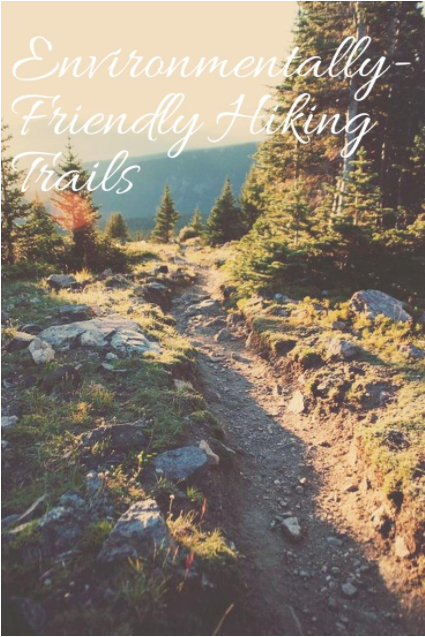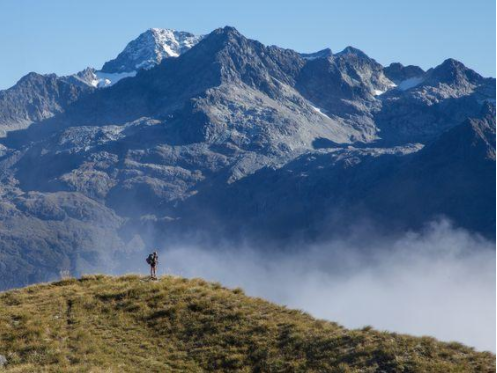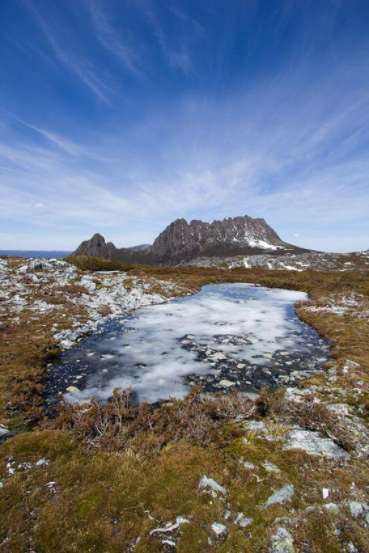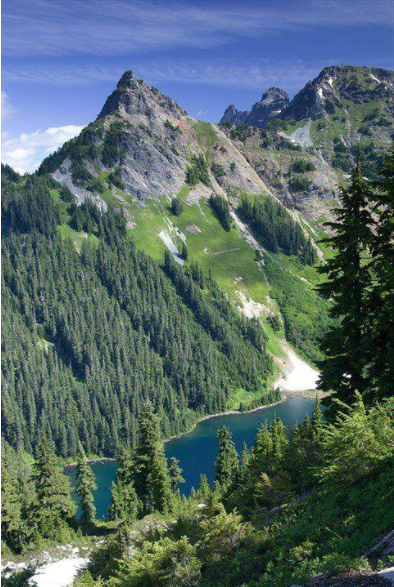
Hiking is a marvelous experience that allows you to feel a unity with nature, helps to reduce anxiety and become mentally and physically healthier. All outdoor enthusiasts know that in order to be able to enjoy an eco-friendly travel, they should take care of nature and minimize traces of human presence.
So, if you want to go on a thrilling adventure, choose environmentally-friendly hiking trails and stick to some tips in order to be green and environmentally-friendly.
How To Become Environmentally Friendly
One of the ways to enjoy the nature and spend a good day is to go hiking. These long, vigorous walks are exciting and adventurous. However, before taking the trip, learn about the area you are going to and find ways how to become environmentally friendly and travel without leaving a trace. It doesn’t matter where you go, always leave the trail as good as it was or even better than you found it. Take on your favorite shoes (best vegan running shoes) and go forward!
Here are some tips that will make your hike more environmentally-friendly.
- Always Stay On Durable Surfaces
Usually, park managers design special trails in order to preserve the nature’s well-being and restrict traffic. These trails include durable surfaces such as sand, rocks, gravel, dry grass, firmly packed dirt, and pine needles. If you are on a designed trail, then walk in line so that you do not promote soil erosion.
But if you’ve decided to venture off-trail, then go side-by-side in order to reduce the impact, provided by the footsteps. If you have noticed new footprints or other signs of the human presence, don’t go in this area, let the soil rest.
- Protect Water Sources
Water is the most valuable source for mankind. However, only 2.5% of all the water on Earth is fresh water and more than 97% is salt water. Of this 2.5% of fresh water, more than two-thirds (68.7%) are frozen as snow and ice, and more than one-third is stored below ground as ground water.
So, there are only 0.3% of fresh water is available as surface water in rivers, lakes, swamps, and streams.
So, don’t harm water sources. Don’t wash your dishes and don’t bathe in the lakes and rivers, it may harm creatures who live there or drink that water. Have a rest and take care of hygiene at least 100-200 meters away from water sources.
- Don’t Leave A Trace
Respect the nature and never leave anything that can harm. Put hygiene products in your trash bag. Choose a plastic bag with odor-minimizing properties.
Also, if you find trash and other signs of human habitation, pack it out. Clean up after a less responsible hiker if it is needed. Also, never take souvenirs. Beautiful flowers, bushes, trees and their leaves should live and flourish in order to amaze people with their beauty. If you want to memorize the moment, then take photos.
- Respect Wildlife
Don’t leave leftovers and don’t feed the animals. Your actions interfere with natural laws of nature because the animals become more dependent on people and don’t use their hunting skills. Sometimes, these animals become very dangerous because they return again and again to the trails where people feed them.
On top of that, if you come across wild animals, never follow them or get closer to them for not to frighten them and not to expose yourself to danger. Also, never come between a mother and her offspring. If you hike together with a dog or dogs, steer clear from water sources where wild animals gather and always keep the dogs under control.
- Respect Other Hikers
Don’t make much noise and stick to traditional colors in clothes for not to create visual pollution. Pay attention to the quality of your attire. It should be durable, functional and eco-friendly. Also, choose your footwear carefully. One of the most beneficial options is the best vegan running shoes. They have the same properties as their counterparts, however, they do not have animal-derived ingredients and they are not tested on animals.
- Take Eco-Friendly Necessities
The necessary essentials you should take with you are sunscreen and bug spray. Sunscreens release harmful chemicals. So, go for products, which don’t have adverse elements. The same concerns the bug spray. You can mix water, witch hazel and add essential oils. It will be an effective bug spray that doesn’t harm the environment.
What Is The Sustainable Hiking Trail?
The definition listed 4 key elements, which are:
- The trail surface must support currently planned and future uses with minimal impact to the natural systems of the area.
- The trail should have a negligible soil loss or movement.
- The trail will not adversely affect occurring fauna.
- Over time, the trail will require little rerouting and minimal maintenance.
Advantages Of Sustainable Hiking Trails
Sustainable hiking trails preserve habitat for plants and animals. Also, they bring benefits to your body and mind. There are advantages of eco-friendly hiking trails you should be aware of.
- Hiking on these trails brings you much fun because these trails are carefully designed. Their purpose is to give the visitor multiple experiences. Thus, you enjoy different views: a tree tunnel, a rocky area, a blooming glade.
- They keep the people interested in staying on the trails. It makes the hiking experience more enjoyable and protects the nature because if people stay on the trail and follow its natural contours, they are less likely to damage fragile fauna and flora.
- They offer not only a pleasant but also a safe experience because they don’t have straight, flat, and muddy surfaces.
- They encourage social interactions, facilitating connections with other trail users and nature.
- You get health benefits: your cardiovascular health is improved and your spine, joints become stronger and the muscles become toned up.
- Eco-friendly trails allow people to learn more about nature, history, and culture because each area is linked to a certain historical period and it has a cultural context.
- These trails improve the environmental awareness of the people because they understand the importance of the protection of the wild areas.
Best Eco-Friendly Hiking Trails
If you’ve decided to go hiking on the eco-friendly trail, here are top three eco-friendly hiking trails.
- Te Araroa Trail, New Zealand

https://www.pinterest.com/pin/122371314855486309/
The name of the trail means “a long path” and this is an absolutely justified name because the trail stretches 3000 km along and it is divided into 160 tracks. It offers different landscapes so that you’ll enjoy the views of the ridgelines and forested ranges. You will go across National Parks, mountain passes, volcanoes, and a farmland.
Why to go:
The scenery is fantastic as you come across river valleys, slopes of the active Tongariro volcano and Takitimu Forest. But that’s not all. Hikers claim that the contact with the friendly Kiwi culture makes this trail unique.
When to go:
From October to April.
- Overland Track In Tasmania, Australia

https://www.pinterest.com/pin/294563631863020751/
The Overland Track is one of Australia’s iconic “must-do” long-distance bushwalks. During your hike, you’ll see spectacular glacially-carved valleys, ancient rainforests, fragrant eucalyptus forest, and amazing alpine meadows. Besides, you’ll enjoy the views of different waterfalls and peaks, including Mt Ossa (1617 m) – it is Tasmania’s highest peak. The hike ends at Australia’s deepest lake – Lake St Clair.
Why to go:
Except for the beautiful scenery, the area offers many opportunities to watch the wildlife. You are welcome to walk just a section of the Overland Track. There are night and day walks from Lake St Clair and Cradle Mountain. Before choosing the trail, note that it is for walkers with a good level of fitness.
When to go:
You should make reservations during the peak walking season, between 1 October and 31 May.
- Pacific Crest Trail (PCT), USA

https://www.pinterest.com/pin/77124212345850681/
The trail is 2659 miles long and it stretches between the Mexican and Canadian border, crossing the states of California, Oregon, and Washington. The PCT is divided into sections and people prefer to hike in sections. The journey ends at the Bridge of the Gods – an impressive cantilevered steel span that crosses the Columbia River between Oregon and Washington.
Why to go:
It reveals the beauty of the valleys, mountains, 25 national forests and 7 national parks. There are numerous notable locations you can find in California (Anza-Borrego Desert State Park, Cleveland National Forest, Crystal Lake Recreation Area, Owens Peak Wilderness, etc.), Oregon (Rogue River National Forest, Winema National Forest, Dee Wright Observatory and McKenzie Pass, etc.), Washington (Gifford Pinchot National Forest, Mount Adams Wilderness, White Pass, etc.)
When to go:
Northbound hikers should go in mid-April or early May. As for Southbound hikers, they should start in late June through early July.
Conclusion
Hiking allows you to discover the most beautiful parts of the world. It’s a perfect way to relax, distract from the hectic world, and rethink your life. So in order to enjoy hiking to the fullest, preserve the natural surroundings and hike on environmentally-friendly trails.



